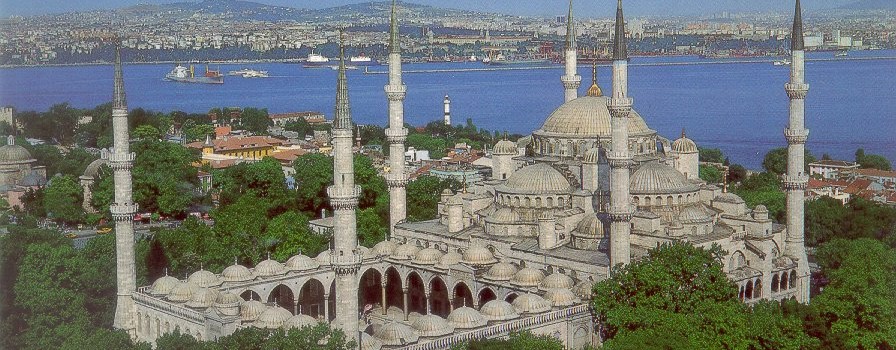Intangible World Heritage – Istanbul
Istanbul has so much to offer that you need to visit this city time and again. In our last issue I had shared with you my experience about the Traditional Turkish Night. Also worth experiencing would be the Sufi Music Concert and Whirling Dervishes Ceremony also known as the Sema Ceremony which is proclaimed as an intangible World Heritage by UNESCO. The Whirling Dervishes trace their origin to the 13th century Ottoman Empire. The Dervishes, also known as the Mevlevi Order, are Sufis, a spiritual offshoot of Islam. On December 17th, Whirling Dervishes across the world celebrate the birth of JelaluddinMevlana Rumi, a mystic.
The TopkapiPalace is surrounded with walls around 5 kilometres and the total area is supposed to be twice the size of the Vatican. The Palace, protected by 28 towers, comprises of 4 enormous courtyards- a magnificent wooden garden fills the outer or first courtyard; the second courtyard had the palace kitchens which now serve as galleries exhibiting imperial collections of crystal, silver and Chinese porcelain. To the left of the second courtyardwas the Harem- the secluded quarters of the wives. The third court yard used to have the Hall of Audience as well as the Library of Ahmet III, and here you can find the exhibition of imperial costumes worn by the sultans and their families, the famous jewels of the treasury and a priceless collection of miniatures from medieval manuscripts. In the centre of this innermost sanctuary, the Pavilion of the Holy Mantle enshrines the relics of the Prophet Mohammed which was brought to Istanbul by the Ottomans. The most sacred treasure is the mantle once worn by Prophet Mohammed. You will also find hair from the beard of the Prophet as well as the letter written by him and an impression of his footprint behind a glass cabinet in the anteroom.
Thereafter we went to see the Sultanahmet Imperial Mosque popularly known as the Blue Mosque because of its magnificent interior panelling of the blue and white Iznik Tiles. The Blue Mosque is undoubtedly one of the famous icons of Istanbul and Turkey along with the Hagia Sophia. Located on the west bank of the Golden Horn, the Blue Mosque is one of the most famous religious monuments in the world. On the other side of the Blue Mosque is the Hagia Sophia which is separated by the Sultanahmet Square, close to the Hippodrome. The ancient Hippodrome was once a gigantic stadium which now is an elongated public garden. The road running around the square was used for chariot racing and today you find three ancient monuments which remain- the first one being the Egyptian Obelisk which used to be in Luxor and was brought to Istanbul by Constantine and supposedly built in 1500 BC.Then you have the Serpentine Column which was brought here from Delphi and is believed to be dated from 479 BC and the last column known as the Column of Constantine, also known as the Brazen Column as it is thought to have been covered with sheets of bronze.
We then went to see the Basilica Cistern. This vast underground water cistern is a very unusual tourist attraction and a fine piece of engineering. Located in the historical peninsula of Istanbul, it is one of the few existing architectural examples built during the 6th Century by Emperor Justinian.You can hear the sounds of dripping water while walking underground.
The highlight of the Cistern was the Medusas which were located at the back of the Cistern. There was one upside down Medusa supporting one of the columns and it is believed that the head of the Medusa was placed upside down to ward off evil spirits. Interestingly, a few columns away, there was a second Medusa with the head sideways which was quite mysterious indeed. The Basilica Cistern is also known as the YerebatanSarnici or the Underground Cistern.
Besides the Blue Mosque, you also have the Süleymaniye Mosque built by the architect Sinan above the Golden Horn in the grounds of the old palace as a fitting memory to its founder Suleiman the Magnificent. Built during the 16th Century, Sinan wanted to surpass the magnificence of Hagia Sophia and this is conspicuous from its great size emphasized by the four minarets rising from each of the four corners of the courtyard.
A visit to Istanbul is not complete until you visit the Grand Bazaar and the Spice Bazaar. The Grand Bazaar comprises of a labyrinth of streets and passages with more than 4000 shops comprising of goldsmiths, carpet sellers, Turkish Arts and Crafts including hand painted ceramics, copperware, brassware, onyx ware as well as the meerschaum pipes. The next part will take you to the tour of The Grand Bazaar and other exciting places.




